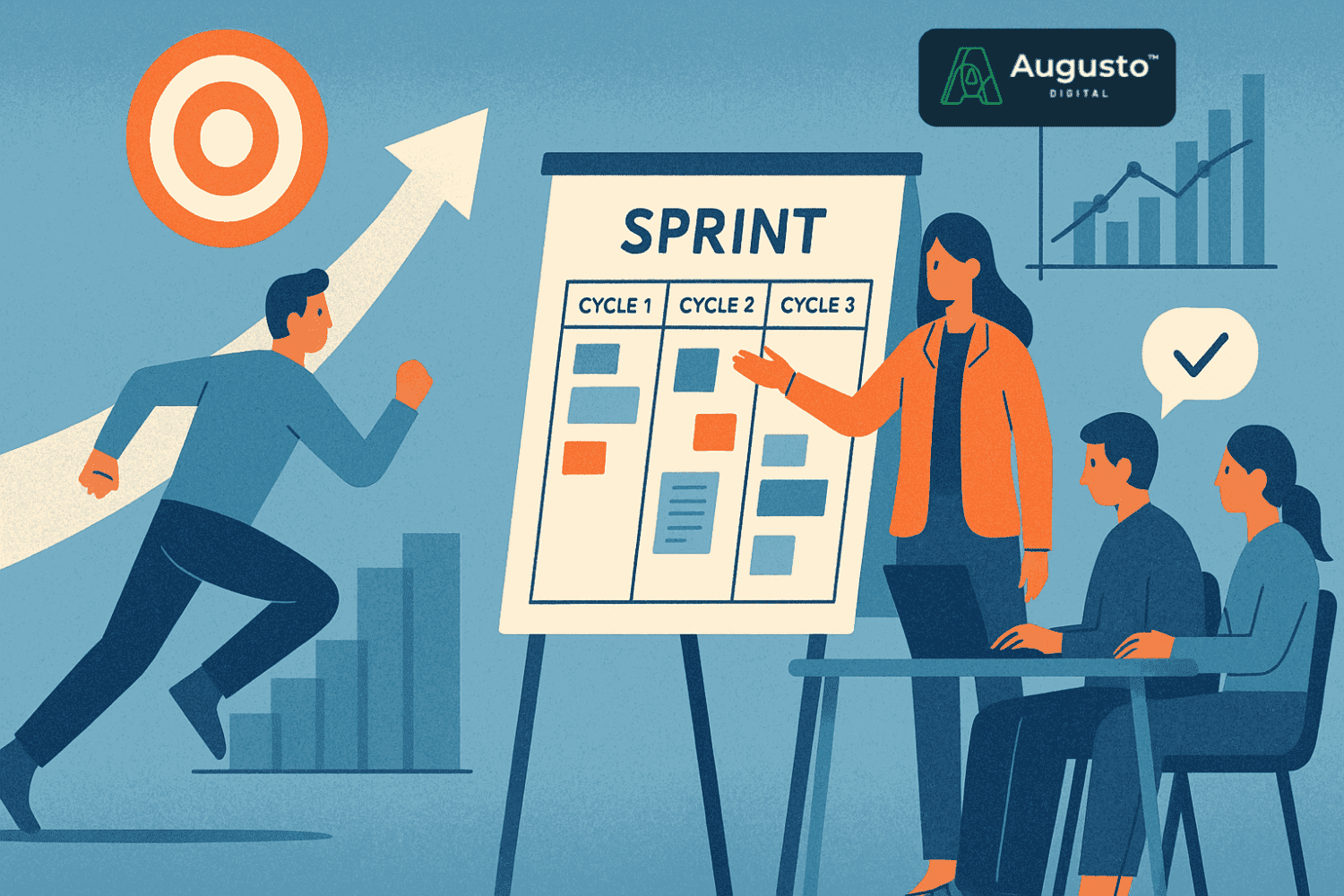One of the greatest challenges in product management is team alignment. With a plethora of tasks, priorities and goals, maintaining a unified front and steering everyone towards a shared objective becomes a difficult task. The struggle to meet deadlines and goals often stems from team members immersing themselves too deeply in the intricacies of the project, losing sight of the overarching vision. A remedy for this disconnect lies in embracing the sprints and cycles model. This framework serves as an effective means to realign your team and establish clear objectives, offering a pathway toward reinvigorating collaboration and focusing on broader business objectives. By implementing sprints and cycles into your workflow, your team can maximize its budget efficiency, maintain a predictable rhythm of value production and adjust for flexibility and scalability.
What are Sprints and Cycles?
A six-week cycle consists of three two-week sprints. Sprints, characterized by their short-term nature, are focused activities and goals that collectively contribute to achieving the broader goal of a cycle. While developers are drawn to the sprint format due to its emphasis on specific and manageable deliverables, an exclusive focus on short-term tasks has the potential to divert the team from their long-term objectives. Integrating sprints into cycles is crucial to maintaining alignment with overarching objectives, ensuring that short-term projects align with broader business goals.
To plan sprints and cycles for your team, consider a multi-year perspective to identify a specific outcome for each calendar year. Then, use this overarching goal to establish a smaller set of objectives. Breaking down goals into yearly and quarterly intervals helps set more manageable expectations and outcomes for teams, ensuring better alignment with your business’s rhythm and providing a roadmap of actionable steps toward long-term goals.
Leveraging Sprints and Cycles to Maximize Your Budget
When starting a large project, one of the first things you’ll likely consider is the budget you’ll allocate for the development of the desired software or digital product. While this kind of endeavor can pose a significant financial commitment, you don’t need to front a substantial budget right from the start. By organizing your timelines and priorities into sprints and cycles, you can maximize results within your budget and secure more budget as you demonstrate proven value.
The natural rhythm of business breaks time into quarters, with two six-week cycles in a quarter. Product management becomes more streamlined when thinking in these clearly-defined and manageable chunks of time, ensuring the delivery of high value every six weeks.
Getting to a place where all parties buy into this method of working takes time, but delivering results within a set timeframe will allow you to build trust and earn increased financial investment in the project, if needed. The reality is that the full scope of a project is uncertain at the outset, but prioritizing the delivery of immediate value enables you and your team to iterate toward success.
Adjusting for Flexibility and Scalability
Flexibility and scalability are crucial elements in product management, as each product is variable. The sprints and cycles model works well because it can accommodate the natural evolution of product development and problems that may arise. Sprints and cycles provide a versatile approach, allowing for intermittent slowdowns between cycles for milestones, demos, discovery and feedback discussions to ensure alignment with business goals. While you may need to pause between cycles or make adjustments to your timeline, sticking to sprints and cycles will help your team fall into a predictable rhythm of producing value.
The primary advantage of operating within six-week cycles is the ability to tailor the system to suit your team. As your team undergoes growth and evolves, your sprints and cycles can adapt accordingly. Similarly, when faced with roadblocks, you have the flexibility to adjust your timeline without losing focus on your overarching goals.
If your team is tackling a large project or facing challenges in meeting deadlines and attaining objectives, contact Augusto. Let’s explore how we can assist in setting up your team with effective sprints and cycles to achieve your business goals.
Let's work together.
Partner with Augusto to streamline your digital operations, improve scalability, and enhance user experience. Whether you're facing infrastructure challenges or looking to elevate your digital strategy, our team is ready to help.
Schedule a Consult

